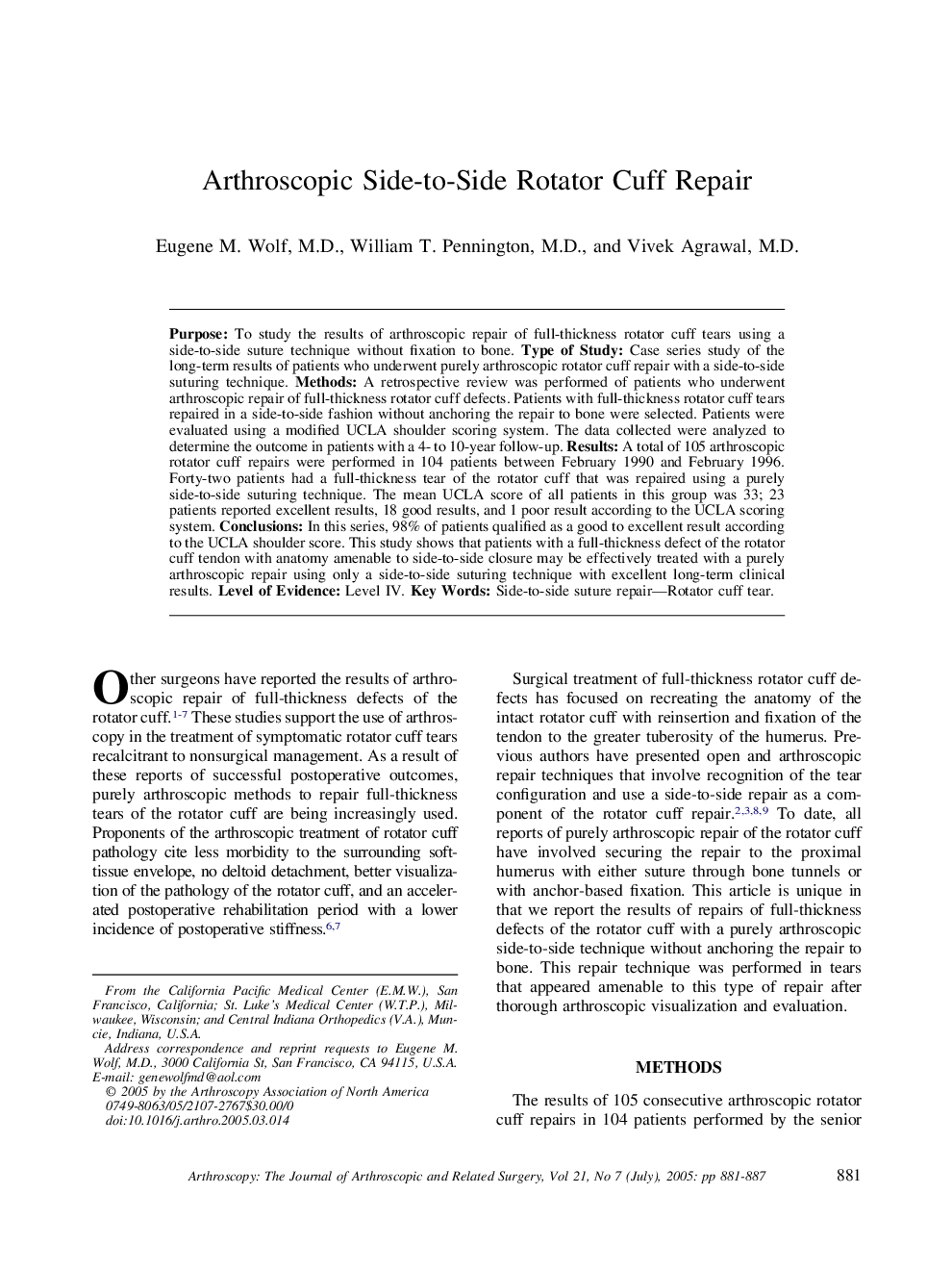| Article ID | Journal | Published Year | Pages | File Type |
|---|---|---|---|---|
| 10078956 | Arthroscopy: The Journal of Arthroscopic & Related Surgery | 2005 | 7 Pages |
Abstract
Purpose: To study the results of arthroscopic repair of full-thickness rotator cuff tears using a side-to-side suture technique without fixation to bone. Type of Study: Case series study of the long-term results of patients who underwent purely arthroscopic rotator cuff repair with a side-to-side suturing technique. Methods: A retrospective review was performed of patients who underwent arthroscopic repair of full-thickness rotator cuff defects. Patients with full-thickness rotator cuff tears repaired in a side-to-side fashion without anchoring the repair to bone were selected. Patients were evaluated using a modified UCLA shoulder scoring system. The data collected were analyzed to determine the outcome in patients with a 4- to 10-year follow-up. Results: A total of 105 arthroscopic rotator cuff repairs were performed in 104 patients between February 1990 and February 1996. Forty-two patients had a full-thickness tear of the rotator cuff that was repaired using a purely side-to-side suturing technique. The mean UCLA score of all patients in this group was 33; 23 patients reported excellent results, 18 good results, and 1 poor result according to the UCLA scoring system. Conclusions: In this series, 98% of patients qualified as a good to excellent result according to the UCLA shoulder score. This study shows that patients with a full-thickness defect of the rotator cuff tendon with anatomy amenable to side-to-side closure may be effectively treated with a purely arthroscopic repair using only a side-to-side suturing technique with excellent long-term clinical results. Level of Evidence: Level IV.
Keywords
Related Topics
Health Sciences
Medicine and Dentistry
Orthopedics, Sports Medicine and Rehabilitation
Authors
Eugene M. M.D., William T. M.D., Vivek M.D.,
